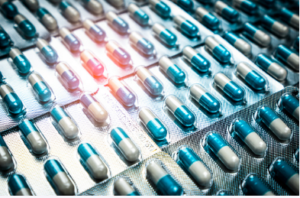Packaging for medicines offers an eco-friendly alternative to plastic bottles, using up to 50% less energy consumption while helping avoid sending unnecessary plastic into landfills.
 Furthermore, it helps divert plastic waste from oceans and reduce greenhouse gas emissions – two benefits that have led many brands to switch to rPET products.
Furthermore, it helps divert plastic waste from oceans and reduce greenhouse gas emissions – two benefits that have led many brands to switch to rPET products.
Environmentally friendly
rPET recyclable packaging for medicines can help the environment by reducing plastic that enters landfills and the ocean and decreasing demand for new petrochemical resources that contribute to greenhouse gas emissions.
PET, or polyethylene terephthalate plastic, is one of the world’s most widely-used plastics, used in applications ranging from water bottles and food containers to electrical cord insulation. Being light yet solid and durable makes production much less energy intensive.
Recycling plastics can be challenging due to being made up of multiple components like oil and petrochemicals, making recycling streams unreliable and leading to landfills or the ocean.
To avoid such issues, you must choose an appropriate packaging material for your medication – this will both ensure its safety and help meet sustainability objectives.
Many medical packaging converters provide extruded rigid sheetstock made of recycled PET (RPET), as well as higher yield thermoforming plastics with higher yield plastic content (amorphous PET [APET]. They can also offer secondary and tertiary packaging designs to ensure medication safety while protecting it from the elements.
Utilising recycled PET can also help increase awareness about the advantages of recycling plastic. Eco-labelling could also be printed onto these bottles for marketing campaigns to raise consumer understanding of sustainability benefits.
Biodegradable
People hearing the term rPET (recycled polyethylene terephthalate) often assume it to be an eco-friendly alternative to plastic. But this material can be found on shopping bags, t-shirts, and other products with sustainable appeal.
Before using recycled PET in your products or packaging, remember a few essential points about rPET. First, as its name implies, it’s made up of recycled plastic bottles, making it an eco-friendly choice that companies looking for recycling options can use in their packaging solutions.
When purchasing recycled plastic (rPET), you must buy from a supplier certified as recycling the material responsibly and committed to sustainable practices. It will ensure your rPET will be safe for use and help create a better world.
Although rPET can benefit the environment, it still presents some risks to human health and the ecosystem. For instance, its production may release microfibers into water-based ecosystems, impacting living organisms we eat and leading to more significant pollution overall.
Another area of concern in rPET resin production is its contents of chlorine and other halogens, which may produce toxic and corrosive benzene byproducts.
Recycling centres typically take great care in sorting plastic for contaminants. It may involve using laser technology or a high-powered vacuum cleaner to separate clean from unusable material.
Suppliers possessing an impressive record in recycling and sustainable practices must be selected because this process can take time.
As part of your research process, it’s also essential that you select a supplier with an established history in producing quality rPET. It will ensure the product you buy meets safety and durability requirements for customers and is resistant to degradation.
Safe for use
Recycled polyethylene terephthalate (rPET) medicine packaging is entirely safe, boasting the same technical properties as virgin PET bottles – making it an excellent option for liquid prescription drugs or tablets.
An extensive range of rPET recyclable packaging for medicines is now available, from containers to pill dispensers sourced from a plastic produced in the United States and meeting all safety standards.
The material used to make recycled bottles comes from plastic bottles that have been cut up, washed, and then processed into pellets that can be transformed into bottles or packaging materials – a great way to conserve resources by diverting waste from landfills.
By substituting recycled PET with virgin plastic, energy used for manufacturing new containers is reduced significantly while transport costs decrease, benefitting both the environment and helping reduce CO2 emissions.
Recycled PET plastic (rPET) offers many environmental advantages over virgin plastics, as it can be recycled repeatedly and more sustainably than their virgin counterparts.
Recyclable
Reusable plastic packaging (rPET) for medicines can help minimise environmental impact while being easily recyclable, yet there can still be challenges associated with recycling PET.
Before being processed, recycled PET bottles must first be collected and sorted for recycling. Individuals or companies such as recyclers, municipal facilities and plastic manufacturers can perform this collection process.
Second, when PET is mixed with other plastics, it can contaminate the recycling stream, particularly oil-derived plastics that make up a more significant percentage. It may make them unrecyclable and create more waste.
Thirdly, PET recycling releases volatile organic compounds (VOCs), which pollute the air and water around production sites and endanger wildlife and other forms of life in their path.
Fourthly, the physical process of reprocessing PET releases energy and consumes significant natural resources. Furthermore, methane gas emissions produced during this process wreak further environmental havoc.
Finally, PET mixed with other materials makes it hard to control how much-contaminated material enters the recycling stream – posing a challenge to medical devices as there may be medications that must be packaged separately from materials, potentially contaminating them.
